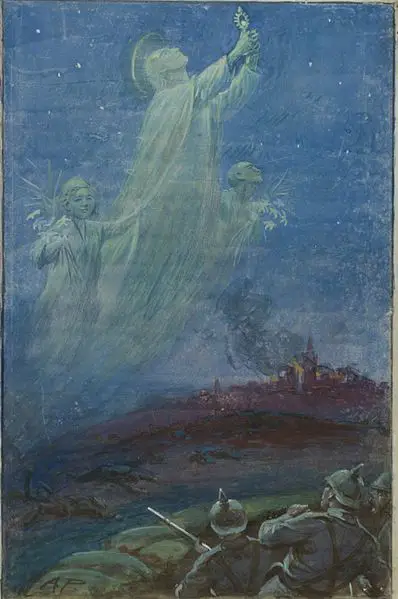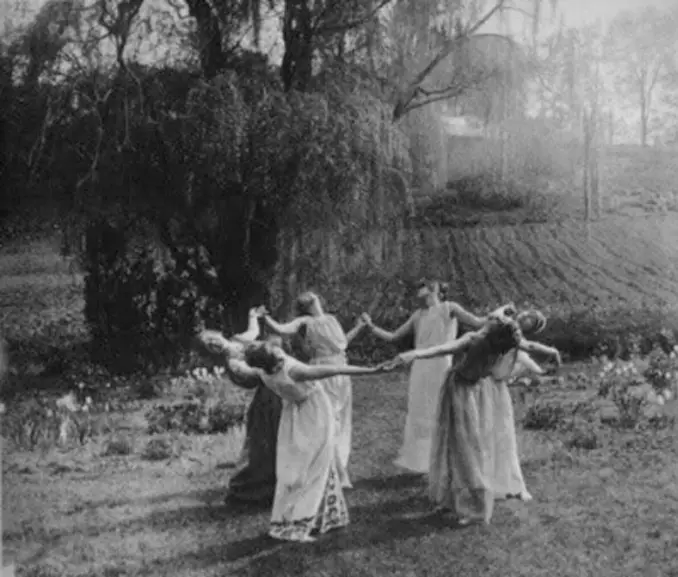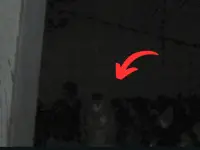Throughout history, wars have claimed countless lives. World War II alone resulted in over 70 million casualties: 3% of the world’s total population at the time. With so much violence and death, it is unsurprising that wartime mysteries abound. Below, read about five of history’s eeriest wartime mysteries.
5. Wartime Mysteries – B-17 Ghost Bomber

On November 23, 1944, at the height of World War II, a base in Cortonburg, Belgium became the site of one of the most perplexing wartime mysteries. The personnel at the base were shocked to spot a B-17 bomber hurtling toward them. No emergency call had been received, so no one was expecting to see a plane flying recklessly above. The personnel at the base could only wait and watch as the bomber plummeted toward them.
Much to their relief, the crashing plane just missed the base’s structures. As it passed, the soldiers noted that the landing gear was down. It hit the ground violently and began bouncing across the terrain before eventually coming to a stop.
Relieved that no one on the base had been injured, the personnel watched with bated breath for the bomber’s crew to emerge and explain their dramatic crash-landing. Twenty minutes passed, but the crew never appeared.
Those who had observed the crash were hesitant to approach the plane. Their enemies had been known to resort to sneaky tactics, so they couldn’t dismiss the possibility that this was a trap. Eventually, British Major John V. Crisp decided to investigate.
Crisp cautiously approached the plane and opened its hatch. Inside, he made a startling discovery: the interior of the plane was empty.
According to Crisp, he located partially eaten food, suggesting that the plane had recently been occupied. However, there were no people, alive or dead, and the plane’s parachutes hadn’t been used.
How had the plane flown and landed without a crew? The military began investigating and eventually discovered that the plane’s crew was alive and well at a base in Belgium. They reported that the plane had been damaged, so they set it on autopilot and bailed. But how had the plane traveled so far without a crew? And how had the crew escaped without parachutes? Even more perplexing, how is it that an unmanned plane managed to land in a military compound? Decades later, these questions remain unanswered.
4. The Angels of Mons

The first World War has its own share of wartime mysteries. For example, during the Battle of Mons, the British forces who were fighting the far greater numbers of the German army had an experience that many call a miracle.
At the start of World War I, the Allies believed that victory would come swiftly and easily. At the Battle of Mons, they were proven wrong when the British were forced to retreat. They suffered many casualties, and public confidence began to waver. That is until stories began to spread about the mysterious forces that apparently appeared at a key moment in the battle to prevent the Allied forces from an even more devastating defeat.
According to these stories, angels armed with bows appeared on the battlefield alongside St. George, a soldier and patron saint of England. The aid of these heavenly soldiers allowed at least some of the British to escape the battle with their lives intact. Numerous accounts of the celestial soldiers were spread and published, and the stories significantly improved the morale of the Allies and their supporters. Many believed that the heavenly aid was a clear indication that they had a divine blessing and that their cause was just.
Unfortunately, there was significant controversy over the truth of the tales. The most vocal critic was Welsh author Arthur Machen. Machen had published a short story entitled “The Bowmen” in the London newspaper the Evening News that bore a strong resemblance to the tales of angels at Mons. In his story, a frightened and dejected soldier at the battle prays to Saint George, who sends an angelic bowman to destroy a German battalion. Machen believed that the other accounts of heavenly intercession were hoaxes based on his fictional work.
Were angels present at the Battle of Mons, serving as protectors of the Allied troops as they fought an impossible fight? Many still believe in the veracity of this story of divine providence.
3. Wartime Mysteries – The Ghost of the Dead Colonel
Another of the Great War’s bizarre wartime mysteries features a colonel who was badly injured during a battle; a grenade exploded close to him, and he tragically lost one of his arms. This devastating injury forced him to be evacuated from the battlefield by medics.
Not long after, several of the colonel’s men saw him on the battlefield. A sergeant-major notified the company’s acting commander that the colonel had returned. The commander looked up and sure enough, the colonel was standing nearby. The commander reported that the colonel wore his cap to the side as he always did, that his boots were caked with mud, and that he had binoculars around his neck. The commander began walking toward the colonel but stopped when he dropped his walking stick. When he looked back up, the colonel was gone.
The commander quickly headed toward the company headquarters and questioned numerous other men. They all reported that they had seen the colonel, but that he had disappeared suddenly. Then, one of the men made a startling observation: when the men had seen the colonel, he had both of his arms.
The commander and the other soldiers were perplexed by this mystery. Their confusion grew when they later found out what had happened after the colonel was evacuated. Shortly after leaving the battlefield, before even reaching a field hospital, the colonel had succumbed to his injuries and died. It happened so quickly that there was no chance he could have reappeared on the battlefield.
2. Operation Cone of Power

Many wartime mysteries are difficult to prove: none more so than the enigmatic “Operation Cone of Power.”
In June of 1940, France succumbed to the German forces after only six weeks of fighting. With its neighbor across the sea under German control, Britain began preparing for what they believed to be an inevitable invasion from the sea. In fact, intelligence suggested that Hitler’s forces had already begun preparing ships for the invasion.
Many cities along England’s southern coast began preparing to defend against the German barges. The coast was barricaded with sandbags and barbed wire, and volunteers kept a constant watch on the horizon. Yet, the German ships never appeared.
According to Gerald Gardner, a retired British civil servant, the citizens of England’s coastal towns should be thanking a group of witches for their salvation. Gardner has stated that during World War II, as during other dangerous wars, the country’s witches gathered together to combine their power against enemy forces. Apparently, the “sea witches” met in an ancient forest on the eve of Lammas Day to weave their spells. Together, they projected messages into Hitler’s mind, urging him to believe that his troops could not cross the sea. The military, when it became aware of the ritual, mockingly gave it the codename Operation Cone of Power.
Gardner, a founder of the modern-day religion of Wicca, researched this operation by interviewing descendants of the witches and scouring their diaries. He claims to have found numerous accounts of the mysterious ritual. He believes that although no one can prove that the witches were responsible for stopping the German forces, he is certain that the ritual did take place. Gardner even found evidence that two of the witches partaking in the ritual mysteriously died. Rumour has it that these witches died for the cause, giving every last ounce of strength to repel Hitler’s forces.
Others are less keen to believe the stories. Historian Ronald Hutton has stated that there is no real evidence to support Gardner’s claims and that the story could be a fabrication meant to make modern Wiccans seem more patriotic instead of as enemies.
1. Wartime Mysteries – The Deadly Double

On November 22 of 1941, a strange ad appeared in The New Yorker magazine. At the top of the ad was a headline reading, “Achtung, Warning, Alerte!” Beneath was a photo of people playing dice in an air-raid shelter and text that read, “We hope you’ll never have to spend a long winter’s night in an air-raid shelter, but we were just thinking… it’s only common sense to be prepared. If you’re not too busy between now and Christmas, why not sit down and plan a list of the things you’ll want to have on hand… And though it’s no time, really, to be thinking of what’s fashionable, we bet that most of your friends will remember to include those intriguing dice and chips which make Chicago’s favorite game: THE DEADLY DOUBLE.” Throughout the magazine, there were other smaller ads featuring the name of the game and dice with the number 12 and 7.
The ad was certainly odd. The reference to an air-raid shelter seemed out of place, as at this time, the United States had stated that it would not get involved in the war in Europe. In addition, the numbers on the dice were not numbers that would typically appear on such game pieces.
The content of the ad became the focus of a military investigation two weeks later when Japanese forces attacked a United States base at Pearl Harbor, thus prompting the country to enter into the war. The attack occurred on December 7, reflecting the numbers 12 and 7 on the dice in the ad. This, paired with the strange reference to air-raid shelters, led some to believe that the ad had been placed as a warning about the impending attack.
Officials were assigned to investigate the matter, but everything led to dead ends. The ad had been submitted in person and had been paid for in cash. The employee who took the money couldn’t recall anything about the person who submitted the copy.
Was the ad a cryptic warning, or merely a bizarre coincidence? Without additional evidence about the mysterious individual who walked into the offices of The New Yorker to place the ad, the truth remains an enigma.







